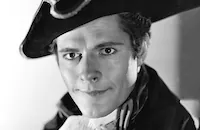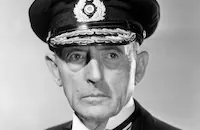The Florentine Dagger

Brief Synopsis
Cast & Crew
Robert Florey
Donald Woods
Margaret Lindsay
C. Aubrey Smith
Henry O'neill
Robert Barrat
Film Details
Technical Specs

Synopsis
Three strangers, Victor Ballau, a Viennese theatrical producer, Dr. Gerard Lytton, a British doctor lately of Vienna; and Juan Casare, an Italian from Rome, arrive in a city that is overlooked by the castle of the Borgias. As the last of the Borgias, Juan is convinced that his family's bad blood will drive him to murder and tries to kill himself with poison. He is interrupted by Lytton, who reveals that the pharmacist from whom he obtained the poison substituted salt for poison. Lytton begs Juan to return with him to Vienna to write a play about the Borgias as a cure for his obsession. Juan does write the play, and Ballau agrees to produce it, but they cannot find an actress to play Lucretia, until Ballau's daughter Florence returns home. The play is a success and Juan falls in love with Florence. When he asks for her hand, however, Victor refuses his permission, reminding Juan of what happened in Italy. Depressed, Juan spends the evening drinking. He returns to the theater only to find that Florence has been called home in the middle of the play. Juan hurries to Ballau's house and finds him dead, stabbed with one of three Florentine daggers once owned by the Borgias. At first Juan thinks that he killed Ballau in a drunken moment. Then suspicion falls on Florence, although she appears to have no motive. Juan begs the doctor to help prove her innocence. They trace Florence to a mask shop. There, they find out that she was not Ballau's daughter, but his stepdaughter and that her mother, an actress who supposedly burned to death in a fire, is actually alive. Her badly scarred face covered by a lifelike mask, she worked as Ballau's housekeeper, Teresa, and killed him to save her daughter from his advances. Believing that she has suffered enough, Juan and Florence escape with her to Italy.

Director

Robert Florey
Cast

Donald Woods

Margaret Lindsay

C. Aubrey Smith

Henry O'neill

Robert Barrat
Florence Fair

Frank Reicher

Charles Judels

Rafaela Ottiano
Paul Porcasi

Eily Malyon
Egon Brecher

Herman Bing

Henry Kolker
Adrian Rosley
Charles Fallon
Ruthelma Stevens
Betty Farrington
David Newell
Russ Powell
Walter Bonn
William Jeffrey
William Wagner
Barlowe Borland
Olaf Hytten
Wheaton Chambers

William V. Mong
Frederick Sullivan
Bernard Suss
Carlos J. De Valdez
Ferdinand Schumann-heink
Eric Mayne
Anders Van Haden
Glen Cavender

Paul Panzer
Louise Seidel
Frank Thornton
William Irving
Crew

Film Details
Technical Specs

Articles
The Florentine Dagger -
By Richard Harland Smith















